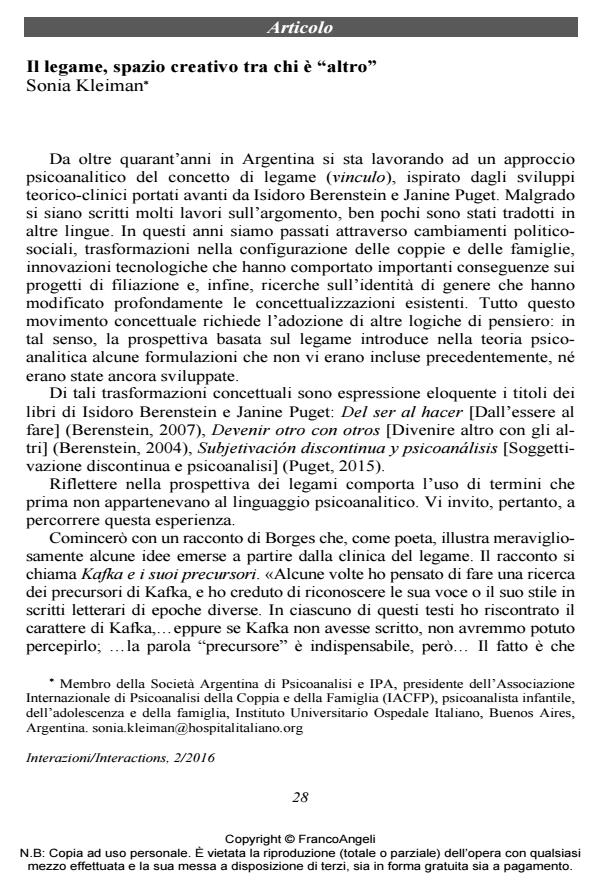The links, what is produced in the space between others
Journal title INTERAZIONI
Author/s Sonia Kleiman
Publishing Year 2016 Issue 2016/2
Language Italian Pages 8 P. 28-35 File size 132 KB
DOI 10.3280/INT2016-002004
DOI is like a bar code for intellectual property: to have more infomation
click here
Below, you can see the article first page
If you want to buy this article in PDF format, you can do it, following the instructions to buy download credits

FrancoAngeli is member of Publishers International Linking Association, Inc (PILA), a not-for-profit association which run the CrossRef service enabling links to and from online scholarly content.
Argentine psychoanalysts have been working on a link approach to psychoanalysis for more than forty years, inspired by Isidoro Berenstein’s and Janine Puget’s theoretical-clinical developments. It proposed an additional perspective of psychoanalytic theory with ideas that had not been previously developed or included. Bridges were built with other disciplines such as philosophy, anthropology and the history of contemporary subjectivity. This task has required the deconstruction, rethinking, and invention of some conceptualisations, not only of family and couple bonds or links, but of what was called "lo vincular" (the link) itself. The term "lo vincular" describes the work carried out by subjects in the context of links, for in order to create a link with others we must do something with the changes brought about by their presence. Such "doing" cannot be anticipated; it is always about to happen despite having happened often before. The same is true of each therapeutic session, no matter whether it is the first, second, or third. We cannot foresee what will happen in this session or in the next, or even what our patient’s next idea might be.
Keywords: Link, lo vincular, between, other, becoming
Sonia Kleiman, Il legame, spazio creativo tra chi è "altro" in "INTERAZIONI" 2/2016, pp 28-35, DOI: 10.3280/INT2016-002004